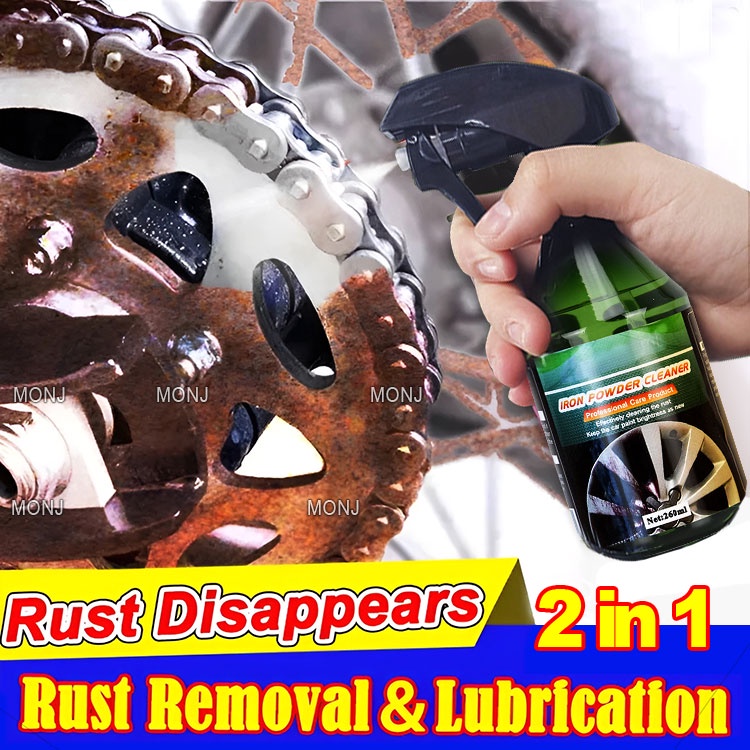Rust—a common affliction that plagues the automotive world—evokes a visceral reaction among car enthusiasts and casual owners alike. It’s not merely an aesthetic blemish; it symbolizes neglect, and for many, it triggers feelings of disquiet. This phenomenon occurs when iron, oxygen, and moisture conspire, resulting in the formation of iron oxide. Rust can creep into any automobile, regardless of its make or model, rendering an otherwise pristine vehicle into an unsightly shell of its former self. But fear not! There are effective ways to remove rust on a car and restore its luster.
Before delving into rust removal techniques, let’s cultivate an understanding of why rust appears in the first place. Environmental exposure plays a significant role. Elements such as road salt, rainwater, and humidity often exacerbate rust formation. As these elements interact with the car’s metal surfaces, they create a corrosive environment that can corrode the paint and eventually reach the underlying metal. Understanding this process provides the motivation to act quickly and address rust concerns early to prevent extensive damage.
When contemplating rust removal methods, one must consider the extent of the rust and the specific areas affected. Rust comes in various forms, including surface rust, scale rust, and penetrating rust. Surface rust, the most benign form, is often just a thin layer that can be treated relatively easily. Scale rust, characterized by its thicker, more flaky appearance, requires additional effort, while penetrating rust, which compromises the structural integrity of the metal, may necessitate professional intervention. Knowing the type of rust you’re dealing with is crucial for selecting the appropriate removal method.
Now, let’s explore some tried-and-true techniques for restoring your vehicle’s surface. One of the most accessible methods for surface rust removal involves the use of sandpaper or a sanding block. Start with coarse sandpaper (around 80 grit) to remove the bulk of the rust, then gradually transition to finer grits (120 to 400) for a smooth finish. This process allows you to strip away the oxidized metal—practically breathing new life into the affected area.
After sanding, it’s imperative to clean the surface thoroughly. Dust and debris can interfere with subsequent treatments, so using a clean, damp cloth to wipe away particles is essential. Once dried, consider applying a rust converter—a chemical solution that transforms rust into a stable compound. Typically containing tannic acid, these converters are an excellent choice for preventing further corrosion. Apply the rust converter according to the manufacturer’s instructions and let it cure fully before proceeding to the next step.
Another effective method for rust removal is using a chemical rust remover. These products are specifically formulated to penetrate rust, effectively dissolving it. They come in sprays, gels, or liquids, making them quite versatile. When using a chemical rust remover, ensure you wear protective gloves and eyewear, as these solutions can be caustic. Follow the product instructions closely and allow adequate time for it to work its magic.
For rust that has advanced beyond the basic stages, you might find power tools beneficial. An angle grinder fitted with a flap disc or wire brush is particularly effective for removing rust; however, caution should be exercised, as these tools can inadvertently damage the surrounding paint if not used judiciously. Remember, patience is key. Taking your time during the rust removal process ultimately leads to a better outcome.
Once rust removal is complete, addressing the resultant bare metal surface is critical. A primer should be applied to prevent future corrosion. Utilizing a high-quality automotive primer that is compatible with your vehicle’s paint will enhance adherence and provide an extra layer of protection. After the primer has dried, the final step is to apply the paint. If possible, seek a color match for your vehicle, ensuring a seamless blend that restores your car’s original beauty.
In addition to these methods, prevention is your best ally in the fight against rust. Regular maintenance and care can drastically reduce the likelihood of rust forming. Washing your car frequently, particularly during winter months when road salt is prevalent, plays a crucial role. Waxing your vehicle every few months creates a protective barrier against the elements. Furthermore, parking in a garage or under a carport can shield your vehicle from rain and snow.
Another intriguing way to combat rust is through the introduction of sacrificial anodes. This technique, often used in marine applications, involves attaching a less noble metal, such as zinc, to the car. These anodes corrode before the car’s metal does, thereby prolonging the life of your vehicle’s body. While this method is less common for standard automobiles, it’s certainly something to consider for those who frequently find themselves in exceptionally moist environments.
In conclusion, rust doesn’t have to spell doom for your cherished automobile. By understanding the causes and employing effective rust removal techniques, you can revive a rusted car and preserve its integrity for years to come. The fascination with this subject lies not merely in the act of restoration but in the resilience it symbolizes—resilience against time, elements, and neglect. Whether you’re a seasoned car enthusiast or a casual owner, understanding the multifaceted approach to rust removal serves as a reminder that attention to detail can lead to magnificent outcomes. Your car deserves it, and so do you.
